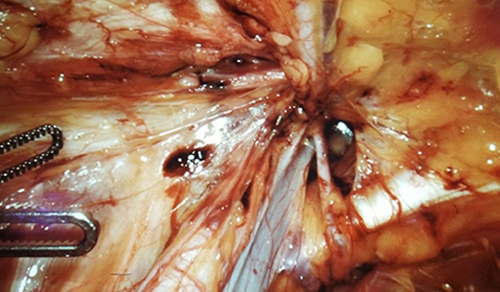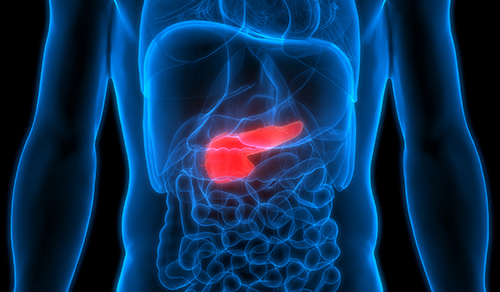Active Surveillance: A Rational Option in Monitoring Low-Risk Thyroid Cancer
Dr. Hyesoo Lowe
“While management for many cancers involves early detection and immediate treatment, a subset of papillary thyroid cancers [PTC] may behave in such an indolent manner that they do not require immediate treatment,” says endocrinologist Hyesoo Lowe, MD, Medical Director of the Thyroid Biopsy Program at the Columbia Thyroid Center at NewYork-Presbyterian/Columbia University Irving Medical Center. “Certain small papillary thyroid cancers carry an excellent prognosis and may not require surgery immediately, or ever. For patients with these cancers, we have established an Active Surveillance program as a management option. Active Surveillance is a structured monitoring program to monitor stable or mild disease, with treatment reserved for disease progression.” This type of surveillance program has its parallel in the monitoring of patients with low risk prostate cancer.
Increasing Incidence of Papillary Thyroid Cancer
According to Dr. Lowe, there has been a three-fold increase in thyroid cancer over the past three decades, with more than 50,000 cases in the United States in 2018. This increase has been mainly driven by a higher incidence of small early-stage PTC. “The mortality rate from thyroid cancer has remained generally stable over the last decade, so this suggests that the increase in small papillary thyroid cancers is largely due to overdiagnosis from detection,” says Dr. Lowe. “High resolution imaging has resulted in incidental thyroid findings in many cases. For example, a carotid study might reveal a thyroid nodule that would then get biopsied and shown to be thyroid cancer. This is quite a common scenario.”
Rationale for Active Surveillance
Over the last 25 years, observational studies have described over 4,000 patients followed with Active Surveillance worldwide. The vast majority of these patients have been able to safely avoid surgery due to the absence of disease progression, defined as tumor growth or involvement of cervical lymph nodes. In the Active Surveillance program at Columbia, patients with PTC are carefully selected based upon their age, tumor size and location, and other criteria. Dr. Lowe and her team first determine if a patient’s tumor is truly low-risk PTC versus a small but aggressive thyroid cancer. “That requires a very careful evaluation of the patient, their imaging studies, and family and risk factor history. These factors are all investigated in our consultations,” says Dr. Lowe.
Candidates with biopsy proven PTC may have a tumor up to 1.5 cm without evidence of cervical lymph node involvement. The patient may have other comorbidities that preclude immediate surgery, and older patients (>60 years) are less likely to have tumor growth over time.
Papillary thyroid carcinoma, left thyroid lobe
“With Active Surveillance, patients are carefully observed without immediate surgery, starting from the time of diagnosis, which is typically done with a fine needle aspiration biopsy,” says Dr. Lowe. “If a patient is identified as being at low risk, they can select surgery or opt for Active Surveillance, which involves monitoring with clinical examination and neck ultrasound every six months for two years, then annually. This close monitoring allows us to follow stable tumors and therefore avoid or delay surgery in many cases. At any point, if a patient changes their mind, or if there is evidence of tumor growth or spread to the nearby lymph nodes, then surgery is recommended. Importantly, key data has shown that delayed surgery is just as effective as surgery done immediately at the time of diagnosis.”
Dr. Lowe notes that patient decisions fall into a continuum. “Some patients want immediate treatment because it will give them peace of mind, and they are willing to accept the risks of surgical complications as well as the possibility of needing lifelong thyroid hormone. Others are the opposite, and would rather wait and monitor if possible. Many patients fall somewhere in between, and this requires quite a bit of discussion to arrive at a treatment decision that is comfortable for them.”
“If a patient is identified as being at low risk, they can select surgery or opt for Active Surveillance, which involves monitoring with clinical examination and neck ultrasound.” — Dr. Hyesoo Lowe
Studies have shown that about 10-15 percent of patients in surveillance programs do eventually have surgery for various reasons. Half of them had tumor growth or lymph node involvement; the other half changed their minds and opted for surgery. “Some patients either felt uncomfortable with the idea of ongoing surveillance and ultimately chose to have definitive treatment, or they were delaying surgery until it was a more opportune time for them,” says Dr. Lowe. “Still, more than 85 percent of patients did not have to have surgery, which is substantial.”
According to Dr. Lowe, the risks of thyroid surgery are generally low, but they’re not zero. “The main risk, up to 2-6 percent, is permanent hypoparathyroidism, which would require lifelong medication to maintain the body’s calcium level in balance. Another possible complication is recurrent laryngeal nerve injury, about 1-2 percent, that could result in vocal cord damage,” says Dr. Lowe. “Although relatively infrequent, these are not minor complications, and they can be permanent.”
“If patients choose surgery, the scope of surgery has changed over the years to a generally less-invasive approach,” continues Dr. Lowe. “This may be either a lobectomy for a low-risk thyroid cancer, or a total thyroidectomy if there is involvement of the other side of the thyroid or further spread. These are careful discussions between the patient, surgeon, and endocrinologist, and this team-based approach is very beneficial to the patient.”
Related Publications










